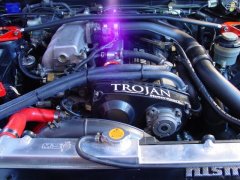Catco And X-force Cats Whats Your Opinion?
Announcements
-
Similar Content
-
Latest Posts
-
Maybe, but this is a VR not a VQ. I'd talk to Just Jap as they are the local AMS importer and have a workshop, otherwise Tunehouse are the Ecutec Australian distributor and said they had modified a few of these
-
I unplugged the O2 sensor, the problem did not resolve itself.
-
Nah. It's a Renault. The VQ is more French than Japanese.
-
That's a fair call. Keen to hear it when it's done and retuned. What's the time frame you reckon?
-









Recommended Posts
Create an account or sign in to comment
You need to be a member in order to leave a comment
Create an account
Sign up for a new account in our community. It's easy!
Register a new accountSign in
Already have an account? Sign in here.
Sign In Now